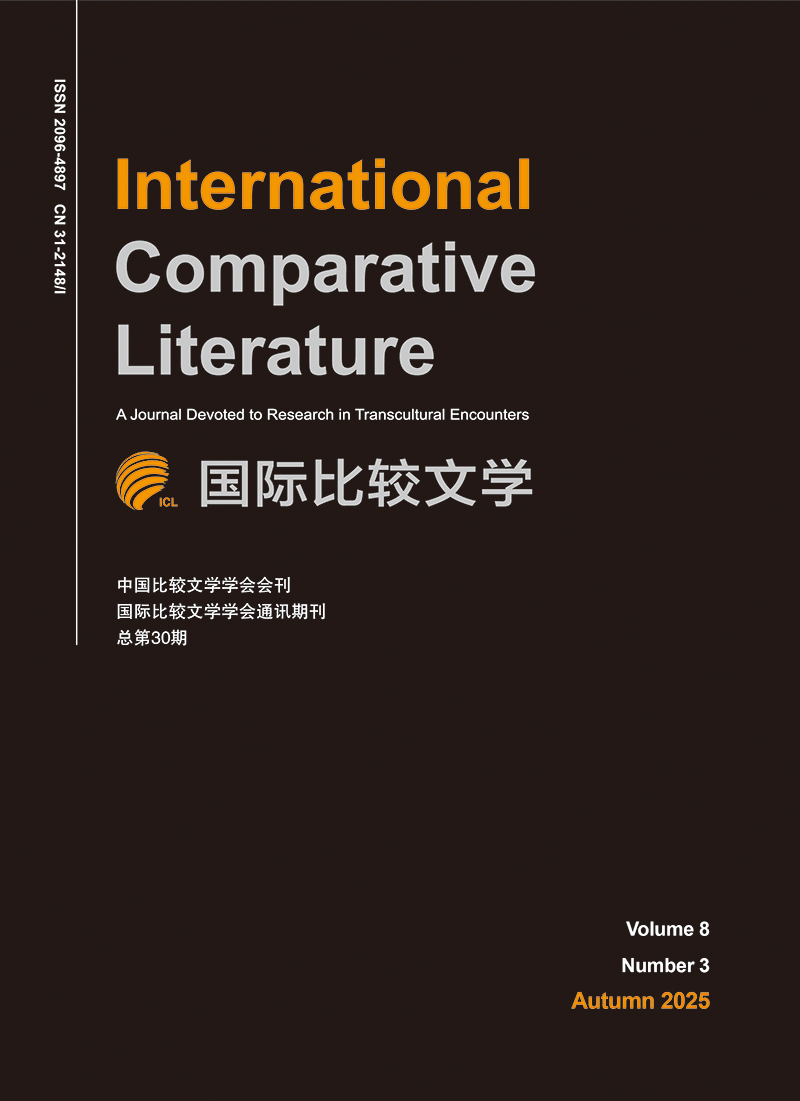|
[1]
|
Barthes, Roland. S/Z:An Essay. Translated by Richard Howard. New York:Hill and Wang, 1974.
|
|
[2]
|
Blakeley, Barry B. "On the Authenticity and Nature of the Zuozhuan Revisited." Early China 29 (2004):217-67.
|
|
[3]
|
Boltz, William G. "The Composite Nature of Early Chinese Texts." In Text and Ritual in Early China. Edited by Martin Kern. Seattle:University of Washington Press, 2007, 50-78.
|
|
[4]
|
Durrant, Stephen. Zuo Tradition/Zuozhuan:Commentary on the "Spring and Autumn Annals." Vol. 1. Seattle:University of Washington Press, 2016.
|
|
[5]
|
——. "Sima Qian's Portrayal of the First Ch'in Emperor." In Imperial Rulership and Cultural Change in Traditional China. Edited by Frederick P. Brandauer and HUANG Chün-chieh. Seattle:University of Washington Press, 2015, 28-50.
|
|
[6]
|
——. The Cloudy Mirror:Tension and Conflict in the writings of Sima Qian. Albany:State University of New York Press, 1995.
|
|
[7]
|
Egan, Ronald C. "Narratives in the Tso Chuan." Harvard Journal of Asiatic Studies 37, no. 2 (1977):323-52.
|
|
[8]
|
Eno, Robert. The Confucian Creation of Heaven:Philosophy and the Defense of Ritual Mastery. Albany:State University New York Press, 1990.
|
|
[9]
|
Forester, M. Edward. Aspects of the New Novel. New York:RosettaBooks, 2010.
|
|
[10]
|
Goldin, R. Paul. The Art of Chinese Philosophy:Eight Classical Texts and How to Read Them. Princeton:Princeton University Press, 2020.
|
|
[11]
|
——. After Confucius:Studies in Early Chinese Philosophy. Honolulu:University of Hawai'i Press, 2005.
|
|
[12]
|
Jannidis, Fotis. "Character." In The Living Handbook of Narratology. Edited by Peter Hühn, et al. Hamburg:Hamburg University Press, 2011.
|
|
[13]
|
LI Wai-yee. The Readability of the Past in Early Chinese Historiography. Cambridge:Harvard University Asia Center, 2007.
|
|
[14]
|
——. "The Idea of Authority in Shih Chi (Records of the Historian)." Harvard Journal of Asiatic Studies 54, no. 2 (1994):345-405.
|
|
[15]
|
Nivison, David S., and Bryan William Van Norden, eds. The Ways of Confucianism:Investigations in Chinese Philosophy. Chicago:Open Court Publishing, 1996.
|
|
[16]
|
Pines, Yuri. "A Hero Terrorist:Adoration of Jing Ke Revisited." Asia Major (Third Series) 21, no. 2 (2008):1-34.
|
|
[17]
|
——. "Biases and Their Sources:Qin History in the Shiji." OE 45, no. 6 (2005):10-34.
|
|
[18]
|
——. Foundations of Confucian Thought:Intellectual Life in the Chunqiu Period, 722−453 B.C. E. Honolulu:University of Hawaii Press, 2002.
|
|
[19]
|
Prince, Gerald. Narratology:The Form and Functioning of Narrative. Berlin:Mouton Publishers, 1982.
|
|
[20]
|
Schaberg, David. A Patterned Past:Form and Thought in Early Chinese Historiography. Cambridge:Harvard University Asia Center, distributed by Harvard University Press, 2001.
|
|
[21]
|
Turner, Karen. "War, Punishment, and the Law of Nature in Early Chinese Concepts of the State." Harvard Journal of Asiatic Studies 53, no. 2 (1993):285-324.
|
|
[22]
|
Watson, Burton. Ssu-ma Ch'ien, Grand Historian of China. New York:Columbia University Press, 1958.
|
|
[23]
|
Wellek, René, and Austin Warren. Theory of Literature. New York:Harcourt, Brace & World, 1956.
|
|
[24]
|
White, Hayden. "The Value of Narrativity." In On Narrative. Edited by W. J. T. Mitchell. Chicago:University of Chicago Press, 1980.
|
|
[25]
|
Yang, Lei. "How versus What, Changes in Narrative Speed from Zuozhuan and Shiji to Hanshu." Monumenta Serica:Journal of Oriental Studies 68 (2020):1-27.
|
|
[26]
|
——. "From Evil Women to Dissolute Rulers:Changes in Gender Representation across the Zuozhuan, Guoyu, and Shiji." Journal of the Royal Asiatic Society 30, no. 4 (2020):721-36.
|
|
[27]
|
陈平原:《中国小说叙事模式的转变》,香港:中文大学出版社,2003年。
|
|
[28]
|
CHEN Pingyuan. Zhongguo xiaoshuo xushi moshi de zhuanbian (The Transformation of the Narrative Pattern of Chinese Novels). Hong Kong:Chinese University Press, 2003.
|
|
[29]
|
顾立三:《司马迁撰写〈 史记〉采用〈 左传〉的研究》,台北:中正出版社,1980年。
|
|
[30]
|
GU Lisan. Sima Qian zhuanxie Shiji caiyong Zuozhuan de yanjiu (Studies on Sima Qian's Reference to the Zuozhuan in the Compilation of The Grand Scribe's Records). Taipei:Zhongzheng Press, 1980.
|
|
[31]
|
韩兆琦:《〈史记〉与传记文学十二讲》,北京:商务印书馆,2016年。
|
|
[32]
|
HAN Zhaoqi. Shiji yu zhuanji wenxue shi'er jiang (Shiji and Biographical Literature in Twelve Essays). Beijing:The Commercial Press, 2016.
|
|
[33]
|
可永雪:《史记文学研究》,见《史记研究集成》第9卷,北京:华文出版社,2005年。
|
|
[34]
|
KE Yongxue. Shiji wenxue yanjiu (Literary Studies of Shiji). In Shiji yanjiu jicheng (A Completed Collection of Shiji Studies). Vol. 9. Beijing:Huawen Book Company, 2005.
|
|
[35]
|
李少雍:《司马迁传记文学论稿》,重庆:重庆出版社,1987年。
|
|
[36]
|
LI Shaoyong. Sima Qian zhuanji wenxue lungao (Essays on Sima Qian's Biographical Literature). Chongqing:Chongqing Publishing House, 1987.
|
|
[37]
|
(清)梁启超:《中国历史研究法》,石家庄:河北教育出版社,2000年。
|
|
[38]
|
LIANG Qichao. Zhongguo lishi yanjiu fa (Research Method on Chinese History). Shijiazhuang:Hebei Education Press, 2000.
|
|
[39]
|
(西汉)司马迁:《史记》,北京:中华书局,1959年。
|
|
[40]
|
SIMA Qian. Shiji (Records of the Grand Historian). Beijing:Zhonghua Book Company, 1959.
|
|
[41]
|
杨伯峻:《春秋左传注》,北京:中华书局,1990年。
|
|
[42]
|
YANG Bojun. Chunqiu Zuozhuan zhu (Commentary on Chunqiu and Zuozhuan). Beijing:Zhonghua Book Company, 1990.
|
|
[43]
|
张大可:《史记研究》,北京:商务印书馆,2011年。
|
|
[44]
|
ZHANG Dake. Shiji yanjiu (A Study of Shiji). Beijing:The Commercial Press, 2011.
|
|
[45]
|
张以仁:《论〈国语〉与〈左传〉的关系》,《历史语言研究所集刊》1962年第33卷,第233-286页。
|
|
[46]
|
ZHANG Yiren. "Lun Guoyu yu Zuozhuan de guanxi" (On the Relation between Zuozhuan and Guoyu). Lishi yuyan yanjiusuo jikan (Bulletin of the Institute of History and Philology of Academia Sinica) 33 (1962):233−86.
|

 点击查看大图
点击查看大图



 下载:
下载:

